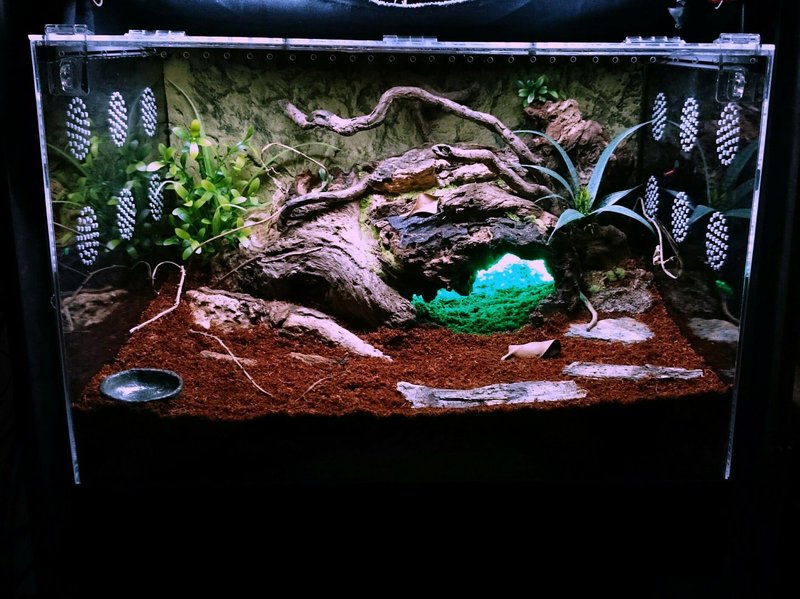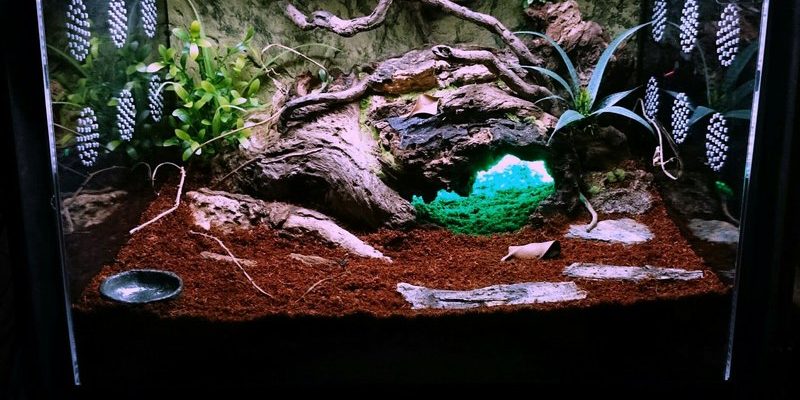
Before we get into the nitty-gritty, let’s make sure we know what we’re dealing with. The Mexican Redknee Tarantula, or *Brachypelma smithi*, is a beautiful spider known for its striking red markings. With the right setup, you can create a stunning environment that mimics their natural habitat. You’ll be the proud owner of not just any tarantula, but one that thrives in a home designed just for it.
Choosing the Right Terrarium Size
When it comes to size, your Mexican Redknee Tarantula deserves room to roam but not so much that it feels lost. A 10-gallon tank is often ideal for a single adult tarantula. It gives them enough space to move around without overwhelming them. However, if you have a younger spider, a smaller enclosure can help keep them secure as they grow.
You might be wondering, “Can I use a larger tank?” Sure, but keep in mind that you’ll want to add decorations and hiding spots so your tarantula feels safe. Having too much open space can stress your pet. So, finding that perfect balance is key.
Substrate: The Foundation of Their Habitat
Let’s talk substrate—the foundation of your terrarium setup. For a Mexican Redknee Tarantula, you’ll want to use something that retains moisture without becoming soggy. Coconut fiber or peat moss works wonders here. These materials help maintain humidity and allow for burrowing, which is essential for your tarantula’s instincts.
You’ll want to layer about 2-3 inches of substrate at the bottom of the tank. This depth gives your spider enough space to dig and create its little hideaway. Just remember to keep an eye on moisture levels. If you notice the substrate is overly dry, a light misting with water can help keep things comfy for your furry friend.
Adding Hiding Spots: Safety and Comfort
Imagine being a tarantula in a big, open space—you’d probably feel a bit exposed. That’s why adding hiding spots in your terrarium is crucial. Think of it like setting up a cozy nook in your home. You can use items like cork bark, caves, or even plant pots turned sideways. These provide much-needed shelter and make your tarantula feel secure.
Placement matters too. Arrange these hiding spots at different levels to create an engaging environment. It’s great for your tarantula’s mental stimulation and mimics their natural habitat. Just make sure everything is stable so nothing falls over and causes accidents.
Temperature and Humidity Control
Getting the right temperature and humidity is like tuning a musical instrument—everything has to be just right. Mexican Redknee Tarantulas thrive in temperatures between 75°F and 85°F. A simple heat mat or a ceramic heat bulb can work well to warm up one side of the terrarium. Just ensure there’s a cooler area for your spider to escape to if it gets too hot.
When it comes to humidity, aim for 40-60%. You don’t want it too damp, but a little moisture is necessary for your tarantula’s health. A hygrometer can help you monitor these levels. If humidity drops, a gentle misting can do the trick.
Lighting: Natural vs. Artificial
Lighting is another piece of the puzzle. While Mexican Redknee Tarantulas don’t need bright lights, a day-night cycle is beneficial. You can achieve this with a low-wattage light bulb that mimics natural daylight. Just remember to turn it off at night—tarantulas are nocturnal and prefer a dark environment when they’re most active.
If you’re using live plants, natural light can also work. Just make sure the enclosure isn’t in direct sunlight for long periods, which can heat up the tank too much. Always prioritize your spider’s comfort over aesthetics.
Feeding Your Mexican Redknee Tarantula
Feeding is one of the most enjoyable parts of caring for your tarantula. These spiders eat insects like crickets and mealworms, but portion size matters. An adult Mexican Redknee can be fed every 5-7 days, while juveniles might need food a bit more frequently.
Always remove uneaten food after 24 hours to prevent mold or odors in the terrarium—it’s like cleaning up after a dinner party. Feeding time can be a fun moment to observe your tarantula’s hunting skills, so make it a routine you look forward to!
Common Problems and Troubleshooting
Sometimes, things don’t go as planned. Maybe your tarantula isn’t eating, or the humidity levels are off. No worries! Here are some common issues and how to fix them:
– Refusal to Eat: If your tarantula isn’t eating, check if the temperature and humidity are in the right range. Stress can also play a role—ensure it has enough hiding spots.
– Mold Growth: If you see mold on the substrate, it could be too damp. Reduce moisture by cutting back on misting and ensure good ventilation.
– Stress Signs: If your tarantula appears sluggish or hides too much, it might be stressed. Evaluate the environment and make adjustments as needed, like reducing noise levels.
Remember, every tarantula is unique, so what works for one might not work for another. Stay observant and adjust your care as needed.
Setting up the best terrarium for your Mexican Redknee Tarantula is all about understanding their needs and creating an environment that feels like home. With the right terrarium size, proper substrate, hiding spots, and careful attention to temperature and humidity, you can provide a thriving habitat for your new pet. Feeding and regular monitoring will help you spot issues before they become big problems.
Every little detail counts, from choosing the right decorations to ensuring a cozy atmosphere. As you settle into this new adventure, remember that caring for your tarantula is a rewarding experience. You’re not just a pet owner; you’re creating a little world just for them. Enjoy the journey, and happy tarantula keeping!

